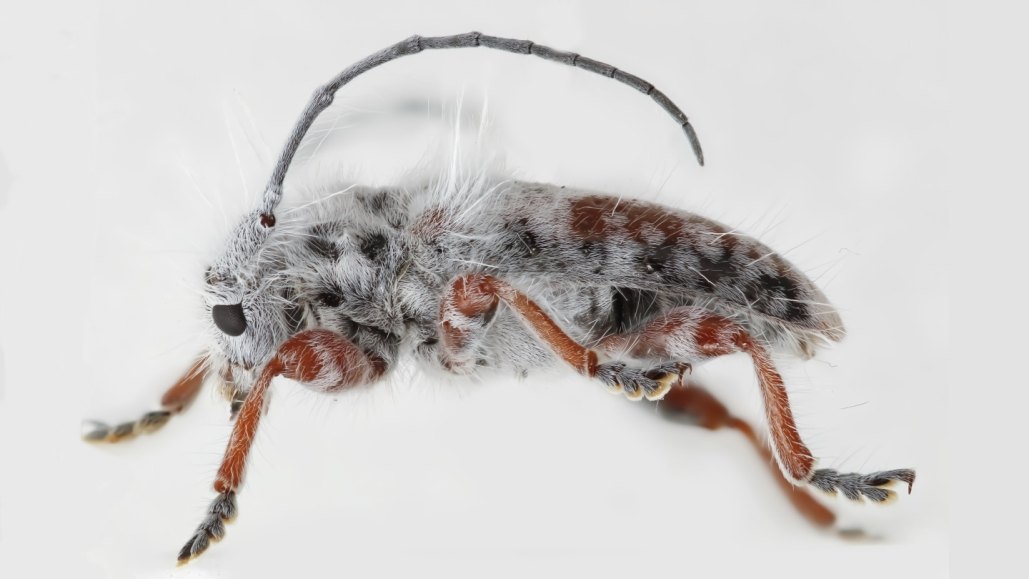The Surprisingly Fluffy Characteristics of a Newly Discovered Longhorn Beetle Species

A newly identified species of longhorn beetle, Excastra albopilosa, boasts an unusually fluffy white coat, drawing significant attention.
Geographically located in Australia, the distinctive insect also possesses separated eye lobes, short antennal segments and has particularly unique leg shapes. These differences denote that the beetle may merit recognition as an individual genetic category, or genus. Researchers published their findings on March 19 in the Australian Journal of Taxonomy.
Every year, it is estimated that around 18,000 species of various kinds are unearthed, with at least half being insects. Evolutionary biologist Menno Schilthuizen, who wasn't part of the study, expressed surprise that this species had not been discovered earlier. The beetle, noted for its visual appeal and size (nearly a centimeter in length), was found in an area frequented by longhorn beetle enthusiasts.
While at an ecolodge in close proximity to Queensland's Lamington National Park, entomologist James Tweed came across what he described as "some white thing" clinging to a slender leaf of basket grass. Upon closer scrutiny, Tweed postulated that this could be a longhorn beetle (Cerambycidae). He took a photo and posted it to iNaturalist, an app helping individuals identify species. Unfortunately, other users of the app and even senior beetle experts at the Australian National Insect Collection in Canberra were unable to ascertain its identity.
Tweed and his research colleagues examined the entire collection of longhorn beetle databases in Australia. They became quite confident that this was an exclusive genus and species given its stark physical characteristics. Tweed, who is affiliated with University of Queensland, hinted that the proposed name for this beetle derived from the Latin words Excastra and albopilosa, translating to “from a camp,” and “white and hairy,” respectively.
The exact function of the white hairs on the beetle remains a mystery to Tweed and his fellow researchers. If the fluffiness of the hair convinces predators that there is a fungal infection, it might lessen the beetle’s chances of being preyed upon. Alternatively, the hairs could be a temperature regulation mechanism for the beetle.
According to Schilthuizen, finding new species is "a very satisfying feeling". Globally, the insect kingdom is potentially composed of five million species, with only a million having been identified and named by scientists. This type of research and discovery "safeguards yet another species, adds it to the scientific literature, and ensures its recognition when it's subsequently found," he adds.




